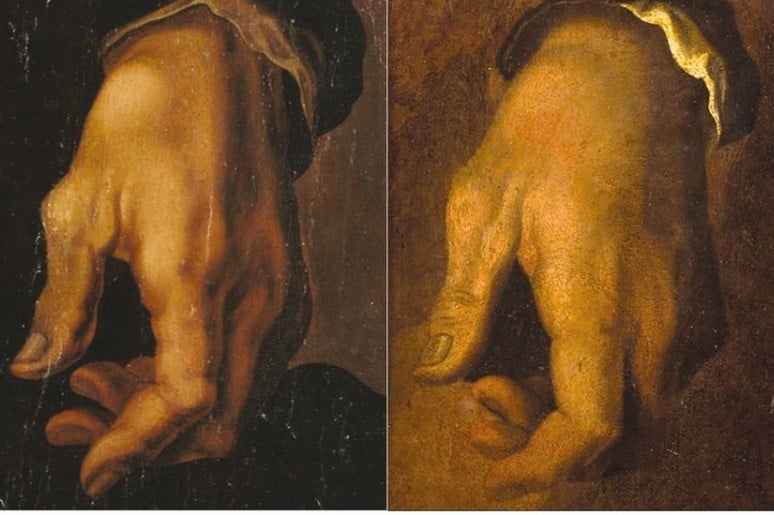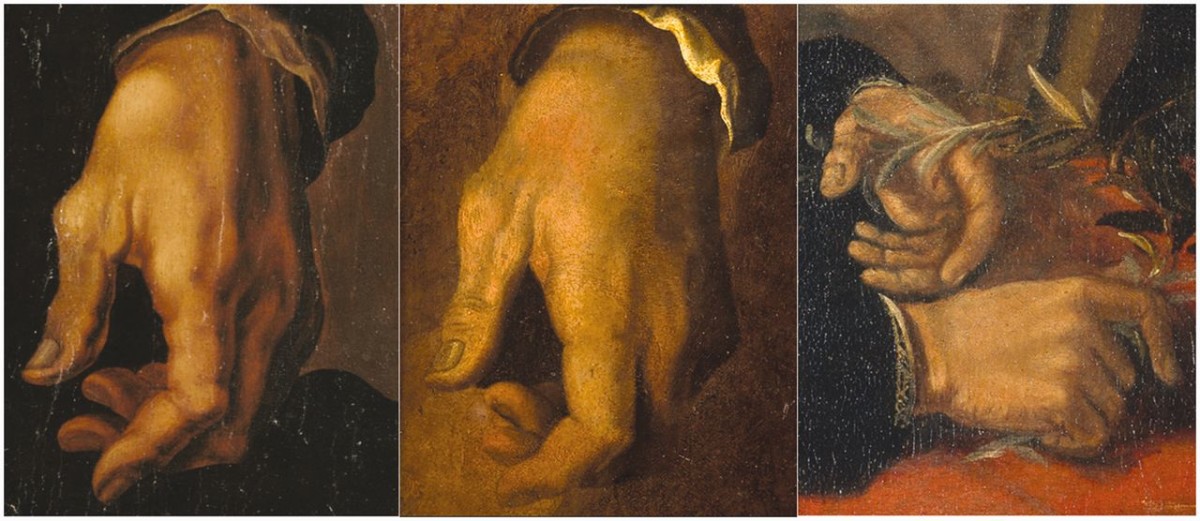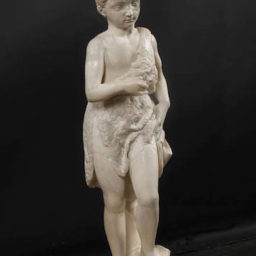


Magnified hands from Daniele da Volterra, Portrait of Michelangelo Buonarroti (circa 1544)
Photo: Metropolitan Museum of Art/Art Resource/Scala, Firenze, © 2015.
Renowned Renaissance artist Michelangelo was a master of sculpture, bending stone and marble to his will with a skilled hand. His prolonged use of hammers and chisels, however, may have led to debilitating arthritis in his hands in his later life.
A newly-published paper in the Journal of the Royal Society of Medicine makes the diagnosis based on careful analysis of portraits of the artist, paired with Michelangelo’s own descriptions of his ailments in letters he wrote complaining of ill health.
“It is clear from the literature that Michelangelo was afflicted by an illness involving his joints,” said the paper’s lead author, Davide Lazzeri, in a statement. “In the past this has been attributed to gout but our analysis shows this can be dismissed.”
The paper claims that paintings of the artist later in life do not show the inflammation of the hands, or the small lumps from uric acid crystals you would expect from gout. Instead, the bony, deformed knuckles appear to be the result of arthritis, from damaged cartilage.

Jacopino del Conte, Portrait of Michelangelo Buonarroti (circa 1535).
Photo: courtesy the Casa Buonarroti Museum, Florence, Italy; Foto Scala, Firenze, © 2015.
This is not the first time that the journal has attempted to retroactively diagnose the Renaissance master with a disease. A 2004 paper written by Muhammad Arshad and Michael Fitzgerald argued that Michelangelo had high-functioning autism, as evidenced by his “single-minded work routine, unusual lifestyle, limited interests, poor social and communication skills, and issues of life control,” according to the abstract.
Michelangelo died in 1564, just a few weeks before he would have turned 89. Vasari wrote that he was in his studio sculpting just six days before his death, despite the fact that he had already begun dictating his letters to avoid the pain of writing.
“The diagnosis of osteoarthritis,” claimed Lazzeri, “emphasizes his triumph over infirmity as he persisted in his work until his last days. Indeed, the continuous and intense work could have helped Michelangelo to keep the use of his hands for as long as possible.”







